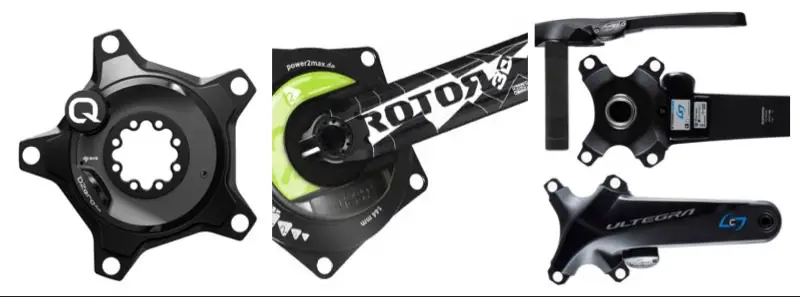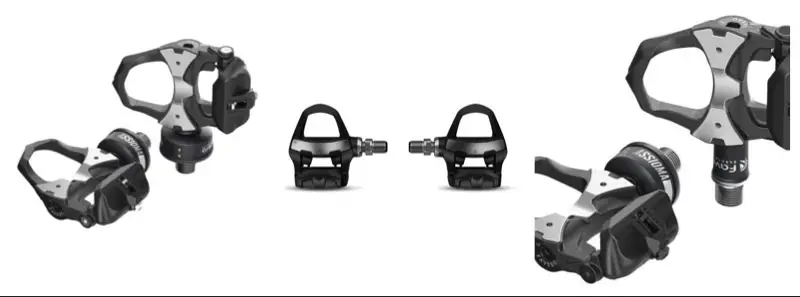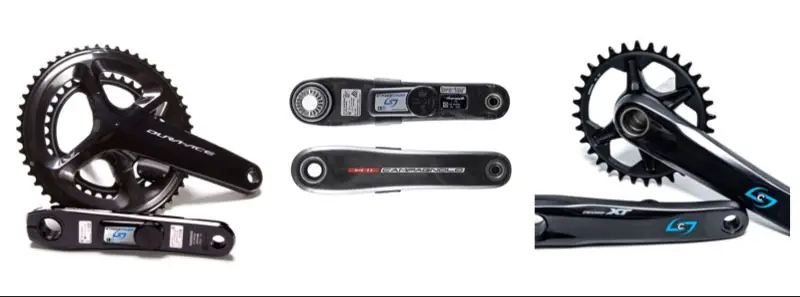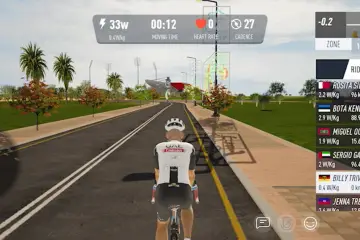Power meters are an expensive bit of kit to buy. Are they worth it? To help you I have compiled 15 reasons why you need to buy a power meter. Making sure that it has some balance also some reasons in here why maybe they are not so worth while.
To create this list at Trivelo we use our panel of cycling writers who have used a wide range of power meters and range from professionals to coaches. Plus plenty of casual riders who are just super passionate about data in their cycling! My main ride is a Cannondale Super Six Evo but a power meter features on my Cannondale Slice. I’m a sucker for a Cannondale.
What is a Cycling Power Meter?
A power meter is a device fitted to a bike that measures the power output of the rider. They work using strain gauges that measure the force being applied. By measuring the torque and combining it with angular velocity, power (measured in watts) can be calculated.
Power Meters are complicated and getting one can be daunting. Power Meters are the next excuse you need for spending money on your bike.

List of the 15 reasons to use a Power Meter
- Make your training count
- Track improvements in fitness
- Improve motivation
- More accurate data you can use
- Know your strengths and weaknesses better
- Structure your workouts
- Test your performance more scientifically
- Easily shared data analysis
- Real-time feedback
- Pacing your effort
- Adapt your race strategy
- Data-driven recovery strategies
- Improved bike fit
- Virtual Group Rides using smart meters
- Better use of training zones
1. Make your training count
For nearly any cyclists making the most of training is vital. A power meter can ensure you get real time feedback on you rides and help you track progress. If you are following a structured programme with little time you can’t afford poor quality time in the saddle. A power meter eliminates those.
2. Track improvements in Fitness
Power meters provide accurate feedback on how your bike fitness is changing. Measuring both your maximum and average power results allows you to compare performance throughout the season. And indeed from season to season.
3. Improve Motivation
Tangible results can really help with motivation. A power meter gives you instant information that is reliable and not impacted by external factors. Anything that helps you to get on your bike more and ride has got to be worth it. Of the 15 reasons to use a power meter this is the one I think matters most to me.
4. Accurate performance data you can use
A power meter removes the uncertainty in your performance. Without a power meter each bike ride can only be measured on less reliable metrics such as speed or heart rate. These can be impacted by a number of factors and not a real reflection on your cycling fitness.
5. Know your Strengths and Weaknesses
Are you a cyclist who is better at short intense rides or longer tough climbs? Have you been a king of the mountains all this time but battling it out on the time trial circuit. A power meter allows you to understand where your strengths and weaknesses are and use this data.
6. Structure your workouts
With a power meter, you can follow structured workouts. These can be designed to improve your fitness and cycling performance systematically. Removes the uncertainty of how much a workout is really improving your cycling fitness.

If you are not currently using clip in pedals but thinking of getting some read our guide to clipless versus flat pedals. Includes some performance statistics on what the differences between the two pedals are.
7. Test your performance more scientifically
Power meters enable you to conduct accurate performance tests. These can include Functional Threshold Power (FTP) tests, to gauge your current fitness level and set realistic training targets. They can also help you assess if you have a bias on one leg as an example. A right / left analysis of your pedalling can be revealing to help you get performance improvements.
8. Easily shared data analysis
Power meter data can be uploaded to various cycling platforms. Strava is a favourite for many readers. For me personally I use Garmin Connect but each to their own. and analyzed to identify strengths, weaknesses, and areas for improvement.
If you are looking for a guide to Strava check our in-depth article with everything on this fitness app.
9. Real-time feedback
If you are a data hungry cyclist just seeing your average, current and maximum speed might not be enough. A power meter display real-time data that can be read from a compatible bike computers or smartphones. This connectivity then allows you to make adjustments during rides for improved performance.
10. Pacing your effort
A power meter isn’t just for training. Using a power meter in a race or on a long sportive can helpw with your pacing. Helping to resist the urge to go out too hard when you are all enthusiastic at the start like a super keen puppy. A power meter helps you pace yourself efficiently preventing early fatigue or burnout.
11. Adapt your race strategy
With power meter data, you can devise a more informed and strategic race plan. From this you can have a better understanding when to push harder or conserve energy during different stages of a race. Listening to your body with clear feedback on how it is coping with the performance.
12. Data Driven recovery strategies
By understanding your power output and energy expenditure, you can plan better post-ride recovery strategies. This can ensure that you take adequate rest and nutrition for recovery. Each ride is different and data can help you listen more to your body and understand the impacts of any ride or race.
13. Improved bike fit
A Retul bike fit or equivalent is an expensive investment. So, you would want to make of this. A power meter can help in optimizing any bike fit. Selecting the most efficient adjustments and any components to improve power transfer.

14. Virtual group rides using smart meters
Virtual group rides such as Zwift or Rouvy rely on smart turbo trainers. Using the power meter data from these you can join virtual group rides. Riding with a power meter in these sessions is a great way to maintain a clear view on your performance but also ensure you ride safely all year round.
15. Better use of training zones
Power meters help you establish personalized training zones, ensuring that you train at the right intensity to achieve specific goals such as endurance, threshold, or recovery rides.
If you are looking to buy a Power meter check out our Power Meter Buyers Guide on our triathlon blog. A list of the best power meters available with pros and cons and best latest prices.
Why you shouldn’t buy a Power Meter
To give some balance this article I also thought worthwhile including why a power meter is not for evertone. They are an expensive extra to buy and if you are not focused on performance improvements are somewhat superfluous. Being complex and data intensive if you just want to enjoy the pleasure o riding a bike there is no getting away from the fact this dillutes that. Understanding the data and making practical decisions from this takes time and effort. In an era where we are all glued to our phones and technology there is a lot to be said for not doing this.

